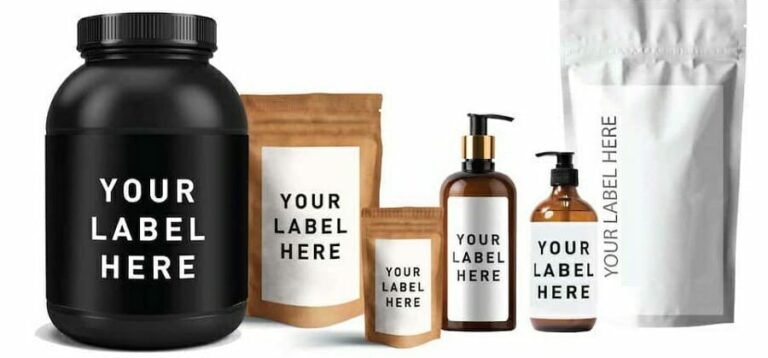The Science Behind Bubble Packaging: How It Keeps Your Products Safe
Introduction to Bubble Packaging: What Is It and Why Is It So Popular?
Bubble packaging, also known as bubble wrap or air cushioning, is a type of protective packaging material that is widely used in the shipping industry. It consists of small air-filled bubbles trapped between two layers of plastic film. The bubbles provide cushioning and shock absorption, protecting fragile items during transit.
One of the main reasons for the popularity of bubble packaging is its effectiveness in preventing damage to items during shipping. The air-filled bubbles act as a barrier, absorbing impact and distributing it evenly across the surface of the packaging. This helps to minimize the risk of breakage or other types of damage that can occur during transportation.
Additionally, bubble packaging is lightweight and cost-effective. It is easy to handle and does not add significant weight to the overall package, which can help to reduce shipping costs. The material used in bubble packaging is also relatively inexpensive, making it an affordable option for businesses of all sizes.
The Evolution of Bubble Packaging: From Bubble Wrap to Air Cushions
Bubble packaging has come a long way since its invention in the late 1950s. It was originally created by engineers Alfred Fielding and Marc Chavannes as a textured wallpaper, but they soon realized its potential as a protective packaging material. The first commercial use of bubble packaging was in 1960, when IBM began using it to protect their fragile computer components during shipping.
Over the years, advancements in technology and materials have led to the development of various types of bubble packaging. One notable innovation is the introduction of air cushions, which are made from a single layer of plastic film with air pockets. These air cushions offer similar protective properties to traditional bubble wrap but are more lightweight and require less storage space.
The use of different materials in bubble packaging has also evolved. While the original bubble wrap was made from polyethylene, today’s bubble packaging can be made from a variety of materials, including recycled plastics and biodegradable films. These advancements have not only improved the performance of bubble packaging but also made it more environmentally friendly.
The Physics of Bubble Packaging: Understanding How It Works
The effectiveness of bubble packaging lies in its ability to absorb shock and protect items during transit. When an impact occurs, the air-filled bubbles compress and distribute the force across the surface of the packaging. This helps to prevent the force from being concentrated on a single point, reducing the risk of damage.
The air cushioning effect of bubble packaging is based on the principles of physics. When pressure is applied to the bubbles, the air inside them is compressed. This compression creates a cushioning effect, as the air molecules push back against the force being applied. The trapped air acts as a shock absorber, dissipating the energy of the impact and preventing it from reaching the item being protected.
The size and arrangement of the bubbles in bubble packaging also play a role in its protective properties. Smaller bubbles provide more surface area for distributing the force of an impact, while larger bubbles offer greater cushioning. The arrangement of the bubbles in a uniform pattern helps to ensure that the force is evenly distributed across the entire surface of the packaging.
The Benefits of Bubble Packaging: Why It’s the Best Option for Shipping
Bubble packaging offers a range of benefits that make it the preferred option for shipping fragile and delicate items. One of the main advantages is its ability to provide excellent protection against damage during transit. The air-filled bubbles act as a cushion, absorbing shocks and preventing them from reaching the item being shipped. This helps to minimize the risk of breakage, scratches, and other types of damage that can occur during transportation.
In addition to its protective properties, bubble packaging is also lightweight and cost-effective. It adds minimal weight to the overall package, which can help to reduce shipping costs. The material used in bubble packaging is also relatively inexpensive, making it an affordable option for businesses of all sizes. This cost-effectiveness is especially important for e-commerce businesses that ship large volumes of products on a regular basis.
Another benefit of bubble packaging is its versatility and customizability. It can be easily cut and shaped to fit the specific dimensions of the item being shipped. This allows for a snug and secure fit, further enhancing the protection provided by the packaging. Bubble packaging can also be used in combination with other packaging materials, such as cardboard boxes or mailing envelopes, to provide additional layers of protection.
Bubble Packaging vs. Other Types of Packaging: A Comparative Analysis
When it comes to packaging fragile items for shipping, there are several options available, including foam, paper, and packing peanuts. Each type of packaging material has its own advantages and disadvantages, and the choice depends on the specific needs and requirements of the item being shipped.
Foam is often used as an alternative to bubble packaging. It provides excellent cushioning and shock absorption, making it ideal for protecting delicate items. However, foam can be bulky and take up a lot of space, which can increase shipping costs. It is also more expensive than bubble packaging and may not be as readily available.
Paper is another option for packaging fragile items. It is lightweight and cost-effective, making it a popular choice for businesses. However, paper does not provide the same level of cushioning and shock absorption as bubble packaging. It is more suitable for items that are less fragile and require less protection during transit.
Packing peanuts are small, lightweight foam pieces that are often used as a void fill material. They help to fill empty spaces in a package, preventing items from shifting during transit. While packing peanuts can provide some cushioning, they are not as effective as bubble packaging in absorbing shocks and protecting fragile items. They can also be messy and difficult to dispose of properly.
How to Choose the Right Bubble Packaging for Your Products
When selecting bubble packaging for your products, there are several factors to consider. The first is the size and fragility of the items being shipped. Smaller, more delicate items may require smaller bubbles or additional layers of bubble wrap for added protection. Larger, less fragile items may be adequately protected with larger bubbles or air cushions.
The weight of the items being shipped is another important consideration. Bubble packaging is lightweight, but if the weight of the items is a concern, you may want to opt for air cushions, which are even lighter. The weight of the packaging itself can also affect shipping costs, so it is important to choose a packaging material that is as lightweight as possible.
The type of packaging material used is also a factor to consider. Traditional bubble wrap is made from polyethylene, which is a durable and flexible plastic. However, if sustainability is a concern, you may want to choose bubble packaging made from recycled plastics or biodegradable films. These options offer similar protective properties to traditional bubble wrap but are more environmentally friendly.
The Environmental Impact of Bubble Packaging: Is It Eco-Friendly?
The environmental impact of bubble packaging has been a topic of concern in recent years. Traditional bubble wrap is made from polyethylene, which is a type of plastic that is not biodegradable. This means that it can take hundreds of years to break down in the environment, contributing to plastic pollution.
However, there are now more environmentally friendly options available. Some manufacturers produce bubble packaging made from recycled plastics, which helps to reduce the demand for new plastic production. There are also biodegradable films available that are designed to break down more quickly in the environment, reducing their impact on ecosystems.
It is important to note that the recyclability and biodegradability of bubble packaging can vary depending on the specific type and brand. It is always recommended to check the packaging materials and recycling guidelines provided by the manufacturer to ensure proper disposal.
The Future of Bubble Packaging: Innovations and Advancements
The future of bubble packaging looks promising, with ongoing innovations and advancements in the industry. One emerging trend is the use of sustainable materials in bubble packaging. Manufacturers are exploring alternative materials, such as plant-based plastics and compostable films, to reduce the environmental impact of bubble packaging.
Another area of innovation is the development of more efficient and automated packaging systems. These systems can produce custom-sized bubble packaging on demand, reducing waste and optimizing packaging efficiency. They can also integrate with other packaging processes, such as labeling and sealing, to streamline the shipping process.
Advancements in technology are also leading to improvements in the performance of bubble packaging. For example, some manufacturers are developing bubble wrap with enhanced shock absorption properties, allowing for even better protection of fragile items. Others are exploring the use of advanced materials, such as graphene, to create stronger and more durable bubble packaging.
Tips for Properly Using Bubble Packaging: Best Practices for Safe Shipping
To ensure the safe shipping of your products, it is important to follow best practices when using bubble packaging. Here are some tips to keep in mind:
1. Choose the right size and type of bubble packaging for your items. Consider the size, weight, and fragility of the items being shipped, and select the appropriate bubble wrap or air cushions.
2. Wrap the items securely in bubble packaging, making sure to cover all sides and corners. Use additional layers or padding for extra protection if needed.
3. Use tape or adhesive to secure the bubble packaging in place. This will help to prevent the items from shifting during transit.
4. Pack the items tightly in a sturdy box or mailing envelope. Make sure there is no empty space or room for movement inside the package.
5. Label the package clearly with the recipient’s address and any necessary shipping instructions. This will help to ensure that the package is handled properly during transit.
6. Consider using additional packaging materials, such as cardboard inserts or foam inserts, for added protection if necessary.
7. Inspect the package before shipping to ensure that it is properly sealed and protected. Make any necessary adjustments or additions before sending it out.
Conclusion: Bubble Packaging as a Key Component of Product Safety and Customer Satisfaction
In conclusion, bubble packaging is a key component of product safety and customer satisfaction in the shipping industry. Its ability to provide excellent protection against damage during transit, combined with its lightweight and cost-effective nature, makes it the preferred option for businesses of all sizes.
While there are other types of packaging materials available, bubble packaging offers unique advantages that set it apart. Its cushioning and shock absorption properties, as well as its versatility and customizability, make it an ideal choice for protecting fragile and delicate items.
As the industry continues to evolve, we can expect to see further advancements in bubble packaging, including more sustainable materials and improved performance. By following best practices for using bubble packaging and considering the specific needs of your products, you can ensure safe and secure shipping, leading to satisfied customers and a successful business.
Check out this informative article on the importance of bubble packaging for protecting your products during shipping and handling. Bubble packaging is a popular choice for e-commerce businesses due to its lightweight and cushioning properties. This article explores the benefits of bubble packaging and provides tips on how to choose the right type for your specific needs. It also discusses the environmental impact of bubble packaging and suggests eco-friendly alternatives. To learn more about bubble packaging and its role in product protection, click here.


